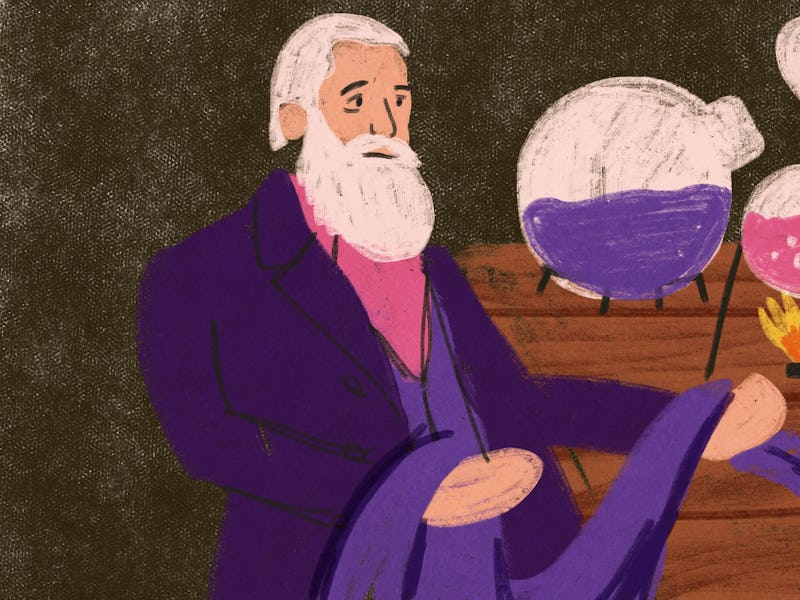Sir William Henry Perkin: How a Chemist Changed Fashion Forever
Sir William Henry Perkin's discovery came at the height of a purple craze.

Google commemorated Sir William Henry Perkin with a homepage doodle on Monday, marking what would have been the British chemist’s 180th birthday. Perkin was famed for his creation of “mauveine” in March 1856, the world’s first synthetic dye, and its discovery at the height of a purple movement in fashion helped propel Perkin to stardom.
“William Henry Perkin was no different that Bill Gates, Steve Jobs, and Jeff Bezos,” Regina Lee Blaszczyk, professor of business history at the University of Leeds and author of The Color Revolution, told CNN. “All these entrepreneurs stumbled across an idea when they were young and unrestrained by the traditions that held back their elders, (and) were able to create something brand new — and revolutionary.”
The 18-year-old chemist wasn’t aiming to create a dye. He was looking to impress his professor at London’s Royal College of Chemistry by coming up with a malaria treatment called quinine during his break. He tried using discarded coal tar from contemporary lamps to create the substance, but instead accidentally made a black goo that left a brilliant purple when washed away. For the first time, fashion designers had a way of dyeing clothes that didn’t involve plants or animals.
Monday’s doodle was created by Britain-based illustrator Sonny Ross:
The final doodle as displayed on the homepage.
Perkins’ story of discovery at a young age is indeed similar to figures that helped found modern computing. Bill Gates predicted in 1980 that other hardware vendors would clone the IBM PC and capitalized on it at an early stage through MS-DOS. Steve Jobs credited the Mac’s use of accurate fonts with his decision to drop in on calligraphy courses at Reed College in the early ‘70s, resulting in the computer’s added use in publishing. Jeff Bezos heard about the growth in internet usage in 1994 and decided to set up an online bookstore.
Mauveine was a big success, and Queen Victoria wore a mauveine-dyed gown in 1862 to the Royal Exhibition. Perkins was also able to create new colors through similar techniques, and the long-lasting dyes revolutionized the fashion industry. A plaque outside his former London house says he “founded science-based industry.” In 1906, he received a knighthood for the discovery.
It’s not the first time Google has commemorated a famous inventor’s life. Previous doodles have celebrated the lives of quantum physicist Max Born, filmmaker Sergei Eisenstein, and astrophisicist Subrahmanyan Chandrasekhar.